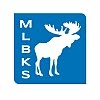It is obvious that the greater the number of entries you do, the greater the odds that an error will occur. It is therefore equally obvious that if you reduce the number of entries being made, you will reduce the likelihood of errors.
I have noticed a trend with most of the firms doing real estate closings, in that they use Conveyancer to do the closing and use PCLaw for their overall accounting. These firms are using Conveyancer to produce the invoice that they give to their client, and to produce the trust statement. Therefore, they have met their LSUC and common law obligations to account to the client for all trust funds received.
These firms then enter the exact same detailed information into PCLaw, which is both a waste of time and, as can be expected, this volume of entries leads to unnecessary errors.
Since you have already met your obligations to the client, the purpose of generating your PCLaw invoice is merely to allow for the accounting transfer of funds from trust to general. In addition to your invoice, you do still have to enter the other trust transactions - mortgage, realtor commission, etc.
But, as far as your fees and disbursements, use “Quick Bill” to generate your invoice, and use block amounts. Enter the Matter number, date, and your entire fee. You could add an explanation code like “ref - real estate fee” or “cinv – conveyancer invoice” with an expanded explanation like: “fees and disbursements – see Conveyancer invoice for this same date and matter”.
For disbursements, one entry HST “Y” for the total taxable disbursements; one entry HST “N” for the total non-taxable disbursements. The Quick Bill total will match your Conveyancer invoice – enter the amount to transfer in the trust box – OK.
As always, I invite your comments and suggestions for future posting topics. Next week – Event Announcement.
Clyde

MLBKS Ontario PCLaw Bookkeeping: A bi-weekly blog written especially for small firms and solo-lawyers practicing in Ontario, and their bookkeepers. While some topics will be of general interest, the target audience are those who use PCLaw on a regular basis. The focus will be the practical use of PCLaw, especially in relation to the Law Society of Upper Canada's Bookkeeping Guide, trust transactions, and spot audits. Your host: Clyde McDonald - Muskoka Legal Bookkeeping Services
No comments:
Post a Comment
I welcome any comments or feedback.
Do you have a question? Do you have a topic for a future article?